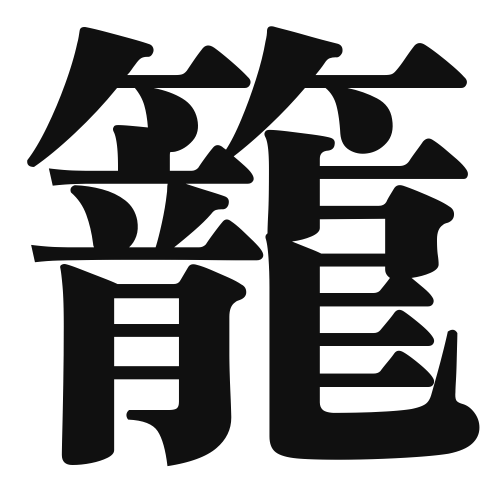1. Overview of Meaning
The kanji “籠” (pronounced “kago” in Japanese) means “basket” or “cage.” It refers to a container made of woven materials, typically used for carrying or storing items.
2. Formation and Radical
Formation of the Kanji: The kanji “籠” is a compound character (会意文字) that combines elements representing a basket and a covering. It visually depicts the concept of a woven container.
Radical: The radical for “籠” is “竹” (bamboo), which is often associated with items made from bamboo or similar materials.
3. Examples of Usage
Common Words and Phrases:
- 籠 (kago) – basket
- 籠城 (rojo) – to defend a castle
Example Sentences in Daily Conversation:
- この籠に果物を入れてください。 (Please put the fruit in this basket.)
- 彼は籠の中に鳥を飼っています。 (He keeps a bird in a cage.)
4. Synonyms and Antonyms
Similar Kanji:
- 箱 (hako) – box; while both are containers, a box is typically rigid and made of solid materials.
- 網 (ami) – net; a net is used for catching or holding items but is not a solid container like a basket.
Antonyms:
- 解放 (kaihō) – liberation; it represents the opposite of confinement, which a basket or cage implies.
5. Cultural and Historical Background
Relation to Japanese Culture: Baskets have been an essential part of Japanese daily life, used in traditional crafts and agriculture. They symbolize resourcefulness and connection to nature.
Proverbs and Idioms:
- 籠の中の鳥 (kago no naka no tori) – a bird in a cage; this phrase is often used to describe someone who feels trapped or restricted.
